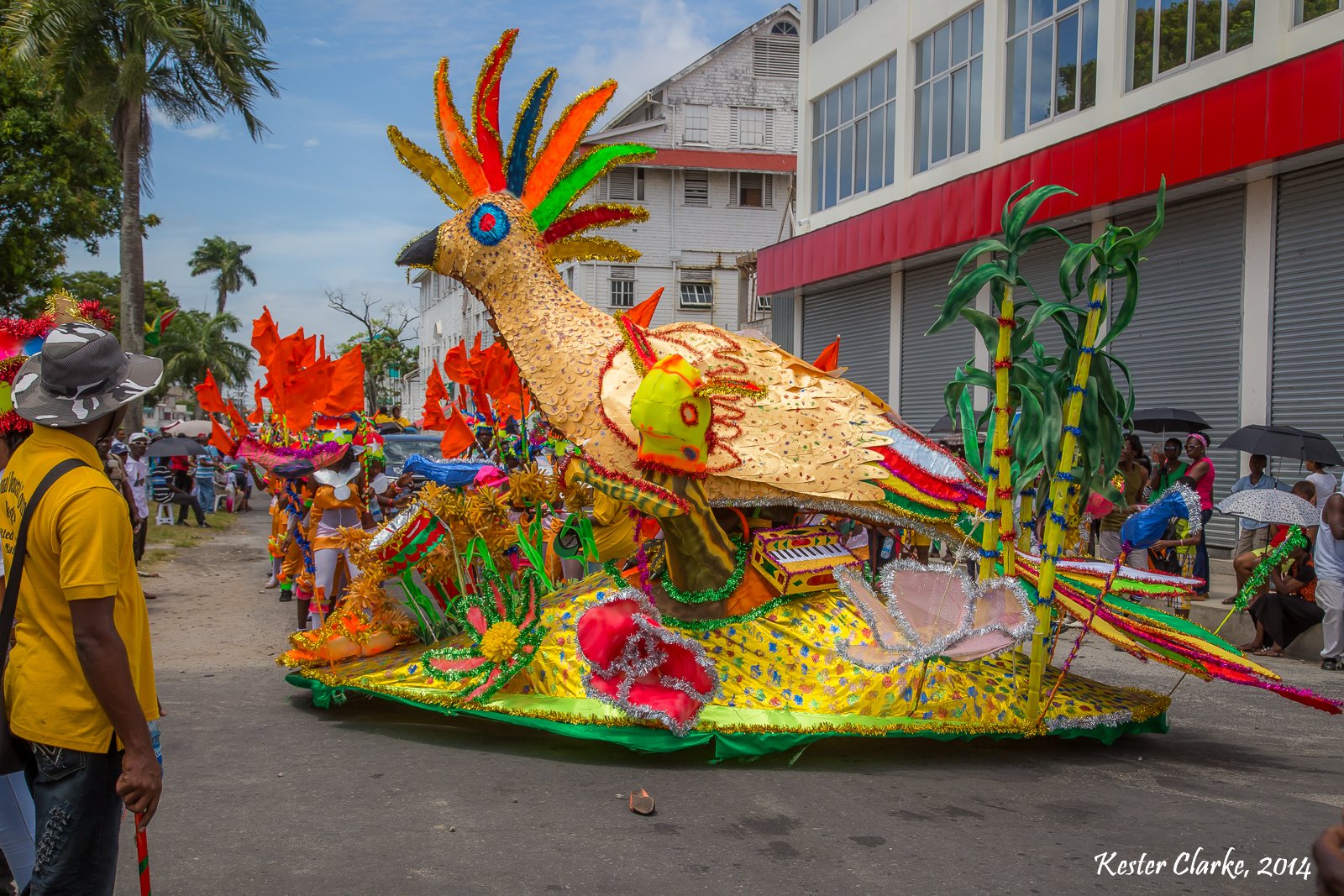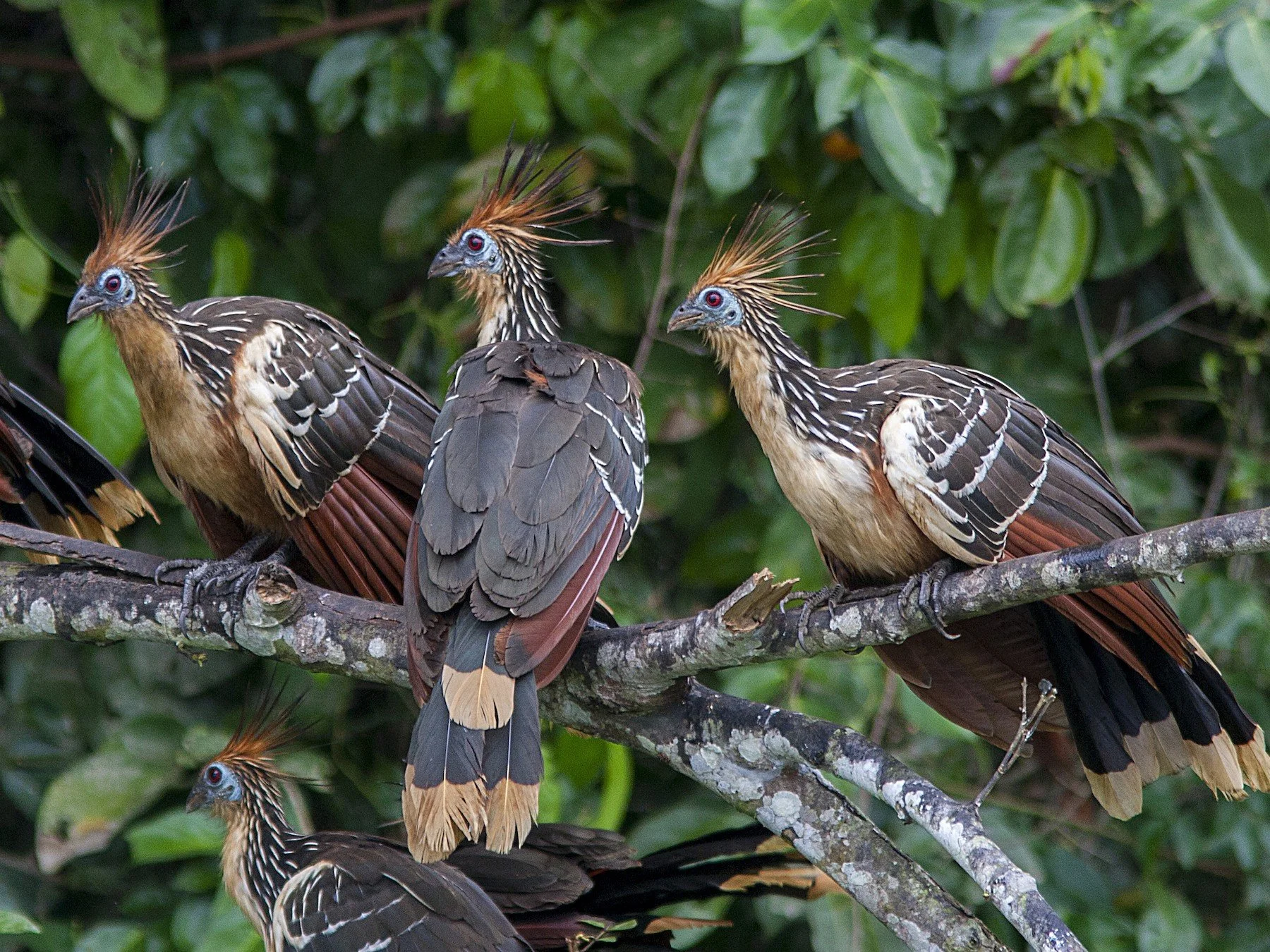Guyana, officially known as Co-operative Republic of Guyana, is a country located close to the northern mainland of South America. It is the third smallest independent state of South America with just 215,000 square kilometers (83,000 sq miles) of land.
The population of the country is 793,215 of which 49% identified as Indo-Guyanese; 25% as Afro-Guyanese; 17% as mixed heritage and 9% are Amerindian indigenous peoples. The nine indigenous groups include the WaiWai; Macushi; Patamona; Lokono; Kalina; Wapishana; Pemon; Akawaio; and Warao.
Guyana was colonised by the Dutch before coming under British control in the late 18th century. The legacy of British rule is reflected in the country's political administration and diverse population, with Guyana as the only South American nation in which English is the official language.

National flower
The Victoria Regia lily was named in honour of the Queen of England. The official name of the flower was the "Victoria Amazonika," but as Victoria Regia, it is the largest of all the water lilies. Its leaves can reach more than 8 feet in diameter
History
The Dutch were the first Europeans to establish colonies in Guyana such as Pomeroon (1581),
Essequibo (1616), Berbice (1627), and Demerara (1752). After the Dutch had taken colonial power for much of the seventeenth and eighteenth century the Dutch formally ceded it to Britain in 1814.
The Dutch found the climate to be suitable for growing sugar cane, converting large tracts of the Guyanese coast into plantations and supplying with labour from the Atlantic slave trade. The country and economy were run by a small European planter elite, which continued on when the colonies of the territory were merged and the land was given over to the British Empire in 1814. Upon emancipation in 1838, almost all of the former slaves abandoned the plantations, and Indians were brought to the country under indenture contracts from 1838 until the end of the system in 1917.
The production of balatá (natural latex) was once big business in Guyana. Most of the balata bleeding in Guyana took place in the foothills of the Kanuku Mountains in the Rupununi savannah. Uses of balatá included the making of cricket balls, temporary dental fillings, and the crafting of figurines and other decorative items (particularly by the Macushi people).
Guyana achieved independence from the United Kingdom as a dominion in May 1966 and became a republic in February 1970, remaining a member of the Commonwealth.
Geography, climate & environment
Guyana is a country within South America with a tropical, generally hot and humid climate, though moderated by northeast trade winds along the coast. There are two rainy seasons, the first from May to mid-August, the second from mid-November to mid-January. Guyana has one of the largest unspoiled rainforests in South America, some parts of which are almost inaccessible by humans.
The habitats for Guyana include coastal, marine, mangrove, riverine, savanna, white and brown sand forest, cloud forest and dry evergreen scrub forests. More than 80% of Guyana is still covered by forests, which also contain the world's rarest orchids, ranging from dry evergreen and seasonal forests to montane and lowland evergreen rain forests. These forests are home to a thousand species of trees and some 8000 plants, half of which are found nowhere else.
Southern Guyana is host to some of the most pristine expanses of evergreen forests in the northern part of South America. The reportedly clean, unpolluted waters of the Essequibo watershed support a remarkable diversity of fish and aquatic invertebrates, and are home to giant otters, capybaras, and several species of caimans. On land, large mammals, such as jaguars, tapirs, bush dogs, giant anteaters, and saki monkeys are still common. In February 2004, the Government of Guyana issued a title to more than 4,000 square kilometres of land in the Konashen Indigenous District as the Kanashen Community-Owned Conservation Area, managed by the Wai Wai. The Iwokrama International Centre for Rain Forest Conservation and Development was created in 1996. It works for the sustainable use of the Iwokrama forest area with eco-tourism to sustain itself. The video introduced by Prince Charles supports Iwokrama’s work to mitigate climate change through rainforest preservation: The Untold Story: The discovery of major crude oil reserves off the Atlantic coast has since made a large impact on Guyana's GDP since drilling began in 2019. GDP grew sharply (43%) through the COVID-19 pandemic year of 2020, and is anticipated to continue at a high level in 2021 (estimated at 20%). The main economic activities in Guyana are agriculture (rice and Demerara sugar), bauxite and gold mining, timber, shrimp fishing and minerals.
Culture, music, dance and carnival traditions
When the colonies of Demerara, Essequibo and Berbice were merged into British Guiana, colonial power and upper class culture exerted substantial influence over music styles of the time. Military bands for parades and ceremonial purpose reflected British sovereignty. Classical music, religious music, or folk songs of Britain were also popular among the ruling class.
Contrary to the Christian-derived music of the colonial elite, bhajans were important to Indo-Guyanese music. Tan singing and folk music accompanied by tassa drums with instruments such as the harmonium, sitar, tabla, dholak and dhanta languages gave rise to fusion styles such as chutney. Eddy Grant, a Guyanese-born immigrant to the UK, helped popularise such genres as reggae through his global hits such as "Electric Avenue" and "I Don't Wanna Dance". Neil Fraser known as Mad Professor, was born in Guyana but came to the UK aged 13 and developed dub music, using recording and mixing equipment. Fraser established Ariwa Records in the 1980s and became a central figure in the UK dub scene as a prolific producer of dub, reggae and an originator of the "Lovers Rock" genre.
The Mashramani Carnival combines a celebration of Independence day and includes steel pan contest, children’s competitions, street parades, intellectual contests, art exhibitions at the Castellani House and various conferences on the occasion of the date. The Mashramani carnival closes with a “parade of the bands”, which attracts thousands of people who accompany the route that is planned to be carried out.
Hoatzin picture from ebird.org





